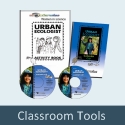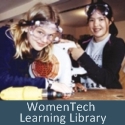A note from Donna: Like Rosie the Riveter, “We Can Do It!”
 I’m happy to share with you that IWITTS recently celebrated our 20th anniversary as an organization. So have we fulfilled our mission, to help educators nationwide close the gender gap for women and girls in technology? We’ve made tremendous strides, but there is still so much work to be done.
I’m happy to share with you that IWITTS recently celebrated our 20th anniversary as an organization. So have we fulfilled our mission, to help educators nationwide close the gender gap for women and girls in technology? We’ve made tremendous strides, but there is still so much work to be done.
I have personally worked with inspiring educators like Barbara Dufrain, a computer programming professor who attended a WomenTech Educators Training. In less than a year following the training, Professor Dufrain increased her female enrollment by 62% and increased the retention of her female and male students by 45%.
Our Proven Practices Collection on the IWITTS website now contains over 100 journal articles and case studies with proven strategies from programs which have increased the number of female students in STEM programs around the country. In our own CalWomenTech Project, community colleges received expert support and technical assistance to help recruit and retain women into technology programs where they were under-represented. The Project was highlighted by the National Science Foundation for demonstrating significant achievement and program effectiveness.
The exciting news is that in the 20 years since I’ve founded this organization we’ve identified what works and we have more tools than ever to teach the knowledgebase to a growing number of educators and to support them in implementation. We now have real time training, online training, webinars, support for implementation, posters and banners with female role models and so much more! We have the secrets to successfully recruiting and retaining women and girls in STEM, and our retention strategies work for male students too. However, we aren’t reaching enough educators, administrators and counselors.
 Just last week I conducted a WomenTech Educators Training for a very engaged group of IT instructors from across the state of California (and half of the participants were male – yay!). Yet, many of my recruitment and retention secrets were completely new information to them. Why are our secrets still secrets in 2014? During the break, a male IT instructor – who also works in industry – said to me, “I now understand the differences between female and male learning styles, wow, what a difference that makes to me both as a teacher and in my workplace.” My goal for the next 20 years is for our recruitment and retention secrets to not to be secrets anymore. We must expand our work and scale up so that our recruitment and retention secrets are not just held by separate and special programs for women and girls in STEM but instead are the domain of the mainstream education system at all school levels.
Just last week I conducted a WomenTech Educators Training for a very engaged group of IT instructors from across the state of California (and half of the participants were male – yay!). Yet, many of my recruitment and retention secrets were completely new information to them. Why are our secrets still secrets in 2014? During the break, a male IT instructor – who also works in industry – said to me, “I now understand the differences between female and male learning styles, wow, what a difference that makes to me both as a teacher and in my workplace.” My goal for the next 20 years is for our recruitment and retention secrets to not to be secrets anymore. We must expand our work and scale up so that our recruitment and retention secrets are not just held by separate and special programs for women and girls in STEM but instead are the domain of the mainstream education system at all school levels.
So I am asking for your help in expanding our audience. Please help us help educators unlock the secrets to recruiting and retaining female students by doing the following:
1) Send your colleagues this link to my free report: “How to Recruit Women & Girls to the STEM Classroom”
In this special report, you will discover:
- The top secret to increasing the number of women in your classes
- Examples of successful outreach campaigns and what made them work
- Key messages female students need to hear that will get them interested in your STEM programs
- And much more
Share this link: http://www.iwitts.org/free/white-paper
2) Join the conversation and like us on Facebook at facebook.com/iwitts.
3) Attend our next WomenTech Educators Online Training with your team
At the training, you’ll develop recruitment and retention action plans to increase the number of female students in STEM programs. Come as a team: the more educators you can train in your department, region, or state, the more likely you are to have significant increases in female students in your school’s STEM programs, as well as lasting institutional change.
Find out more about the Online Training
 I’m grateful to the IWITTS community – thousands of educators from around the country – who have partnered with us and worked with each other to implement these proven strategies in their classrooms, programs, districts, regions and states. From adjunct instructors to college presidents, and counselors, advisors, administrators, and many others, I’m continually inspired by the dedication of educators who care deeply about ensuring that female students have unlimited potential to pursue rewarding, fulfilling careers in STEM. It’s up to us to ensure that the secrets to recruiting and retaining women (and men) in STEM won’t be secrets anymore.
I’m grateful to the IWITTS community – thousands of educators from around the country – who have partnered with us and worked with each other to implement these proven strategies in their classrooms, programs, districts, regions and states. From adjunct instructors to college presidents, and counselors, advisors, administrators, and many others, I’m continually inspired by the dedication of educators who care deeply about ensuring that female students have unlimited potential to pursue rewarding, fulfilling careers in STEM. It’s up to us to ensure that the secrets to recruiting and retaining women (and men) in STEM won’t be secrets anymore.
Like Rosie the Riveter said, “We can do it!”
 Most women will not be able to see themselves in a program where no one looks like them, so they won’t enroll. It’s just that simple.
Most women will not be able to see themselves in a program where no one looks like them, so they won’t enroll. It’s just that simple.
 I’m so happy to share with you that IWITTS will receive an Advanced Technological Education (ATE) grant from the National Science Foundation to help increase enrollment and retention of women in community college STEM courses!
I’m so happy to share with you that IWITTS will receive an Advanced Technological Education (ATE) grant from the National Science Foundation to help increase enrollment and retention of women in community college STEM courses! Just last week I conducted a WomenTech Educators Training for a very engaged group of IT instructors from across the state of California (and half of the participants were male – yay!). Yet, many of my recruitment and retention secrets were completely new information to them. Why are our secrets still secrets in 2014? During the break, a male IT instructor – who also works in industry – said to me, “I now understand the differences between female and male learning styles, wow, what a difference that makes to me both as a teacher and in my workplace.” My goal for the next 20 years is for our recruitment and retention secrets to not to be secrets anymore. We must expand our work and scale up so that our recruitment and retention secrets are not just held by separate and special programs for women and girls in STEM but instead are the domain of the mainstream education system at all school levels.
Just last week I conducted a WomenTech Educators Training for a very engaged group of IT instructors from across the state of California (and half of the participants were male – yay!). Yet, many of my recruitment and retention secrets were completely new information to them. Why are our secrets still secrets in 2014? During the break, a male IT instructor – who also works in industry – said to me, “I now understand the differences between female and male learning styles, wow, what a difference that makes to me both as a teacher and in my workplace.” My goal for the next 20 years is for our recruitment and retention secrets to not to be secrets anymore. We must expand our work and scale up so that our recruitment and retention secrets are not just held by separate and special programs for women and girls in STEM but instead are the domain of the mainstream education system at all school levels. I’m grateful to the IWITTS community – thousands of educators from around the country – who have partnered with us and worked with each other to implement these proven strategies in their classrooms, programs, districts, regions and states. From adjunct instructors to college presidents, and counselors, advisors, administrators, and many others, I’m continually inspired by the dedication of educators who care deeply about ensuring that female students have unlimited potential to pursue rewarding, fulfilling careers in STEM. It’s up to us to ensure that the secrets to recruiting and retaining women (and men) in STEM won’t be secrets anymore.
I’m grateful to the IWITTS community – thousands of educators from around the country – who have partnered with us and worked with each other to implement these proven strategies in their classrooms, programs, districts, regions and states. From adjunct instructors to college presidents, and counselors, advisors, administrators, and many others, I’m continually inspired by the dedication of educators who care deeply about ensuring that female students have unlimited potential to pursue rewarding, fulfilling careers in STEM. It’s up to us to ensure that the secrets to recruiting and retaining women (and men) in STEM won’t be secrets anymore.
 Update: I’m happy to announce that the problem that was preventing comments from posting to the blog has been fixed, so all posts are once again open for commenting. Again, I really apologize if you posted a comment in March or April that did not make it onto the blog. Please repost your comment now and I look forward to responding. ~Donna
Update: I’m happy to announce that the problem that was preventing comments from posting to the blog has been fixed, so all posts are once again open for commenting. Again, I really apologize if you posted a comment in March or April that did not make it onto the blog. Please repost your comment now and I look forward to responding. ~Donna





Recent Comments